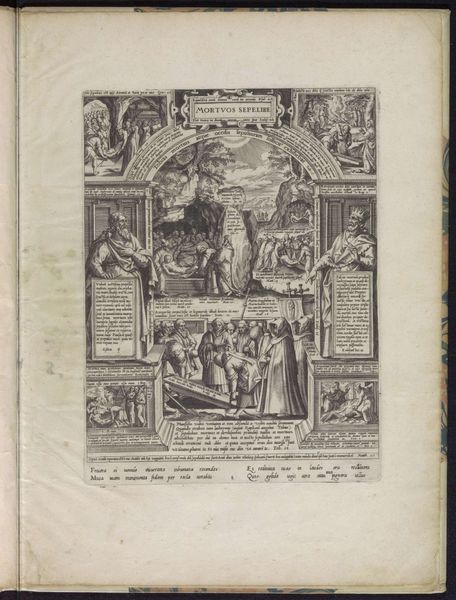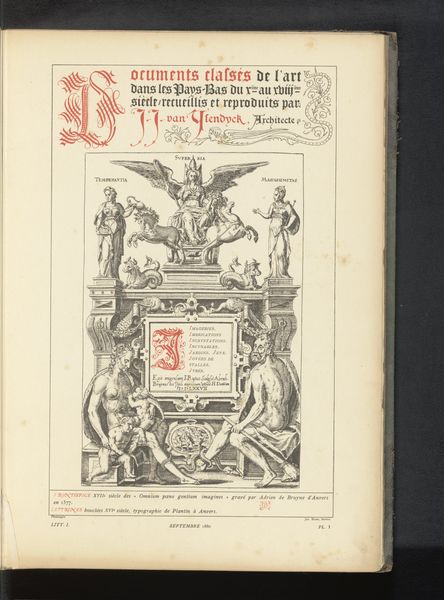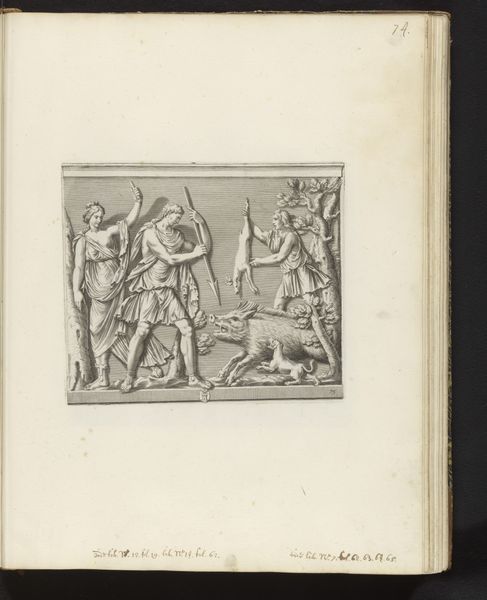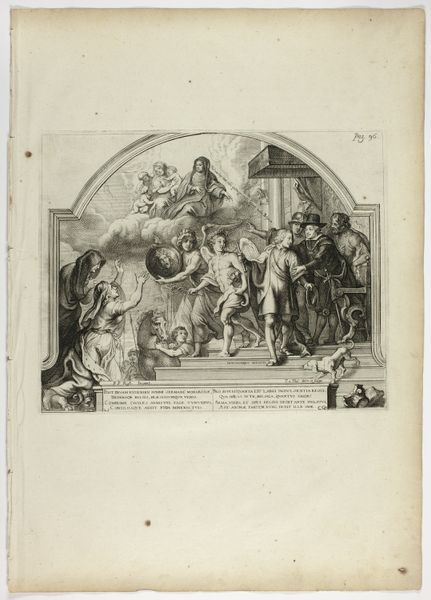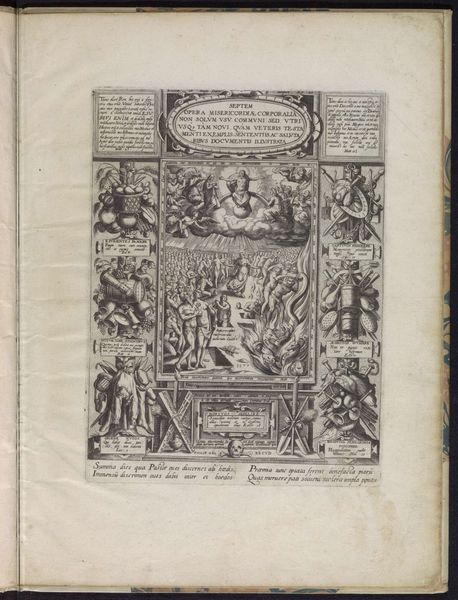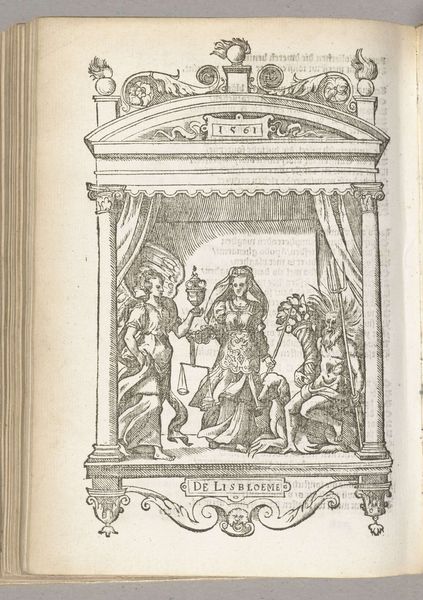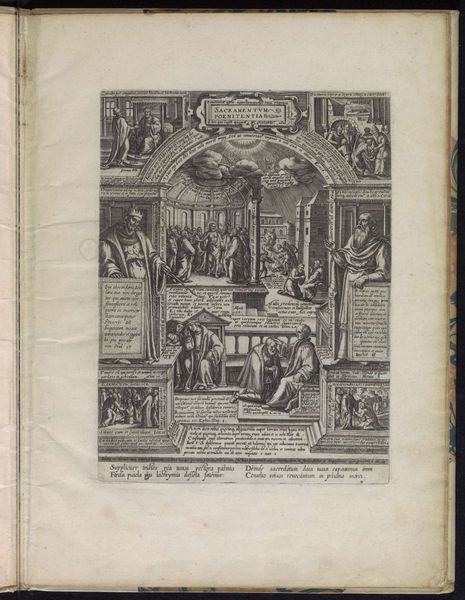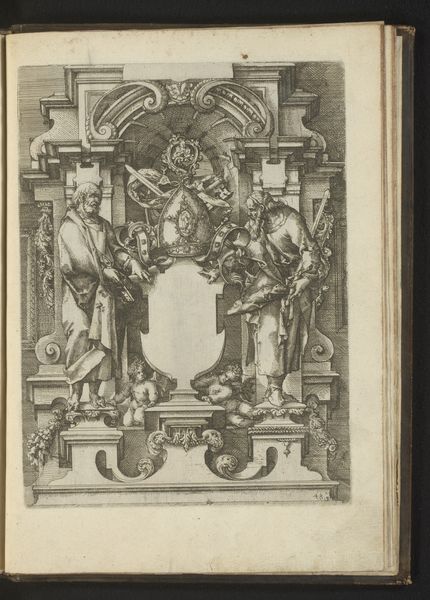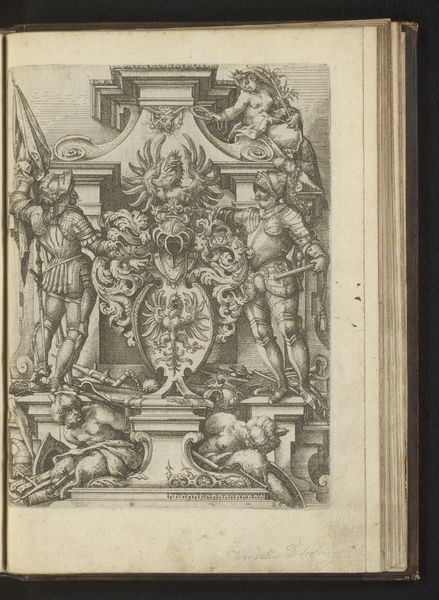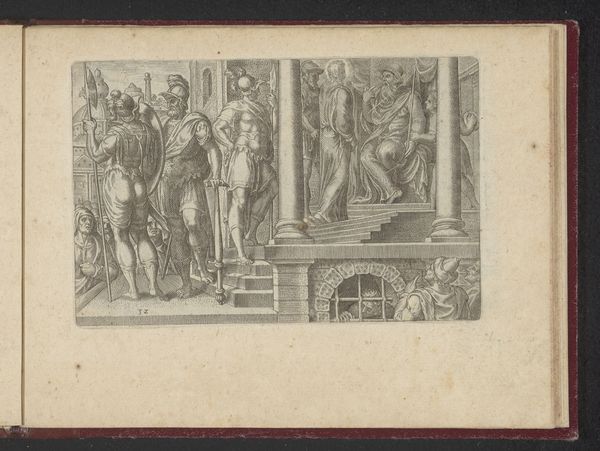
#
toned paper
#
pen sketch
#
sketch book
#
personal sketchbook
#
ink drawing experimentation
#
pen-ink sketch
#
pen work
#
sketchbook drawing
#
storyboard and sketchbook work
#
sketchbook art
Dimensions: height 402 mm, width 262 mm
Copyright: Rijks Museum: Open Domain
Editor: This pen-and-ink drawing, titled "Mithras Killing the Sacred Bull," dates back to somewhere between 1564 and 1622, attributed to an anonymous artist. It looks like a page torn straight from a sketchbook. The details are incredible. What do you see when you look at it? Curator: I see the labor involved in its production. The meticulous, repetitive marks of the pen, building up the image line by line, suggest a culture of artisanal production. This wasn’t just about illustrating a story; it was about demonstrating skill and control of the material, in this case, ink and paper. Where was this sketchbook likely produced, do you think? Editor: Considering the style, maybe somewhere in Europe? But what makes this different from just any illustration of a story? Curator: Precisely. Look at the quality of the paper itself. It isn’t just a blank slate. It has a “toned” quality to it, likely a deliberate choice reflecting the material’s value. This piece asks us to think about the accessibility of materials. Was this a common or precious commodity? The intended audience, their economic standing and consumption habits – all of it informs how we understand this work. Editor: So, it's not only about the image, but about who had access to art materials? Curator: Exactly. And what that access *meant* for how art was made and received. This wasn’t necessarily fine art hanging in a gallery. This could have been a teaching aid, a personal reflection, or something else. Understanding the material circumstances of its creation offers a really different avenue of inquiry than simply knowing the myth it depicts. Editor: I see what you mean! I guess analyzing it materially really opens up a whole new perspective about art creation back then. I’ll keep that in mind for future works. Curator: Excellent. By thinking critically about material conditions and artisanal processes, we challenge our conventional understanding of “art.”
Comments
No comments
Be the first to comment and join the conversation on the ultimate creative platform.
